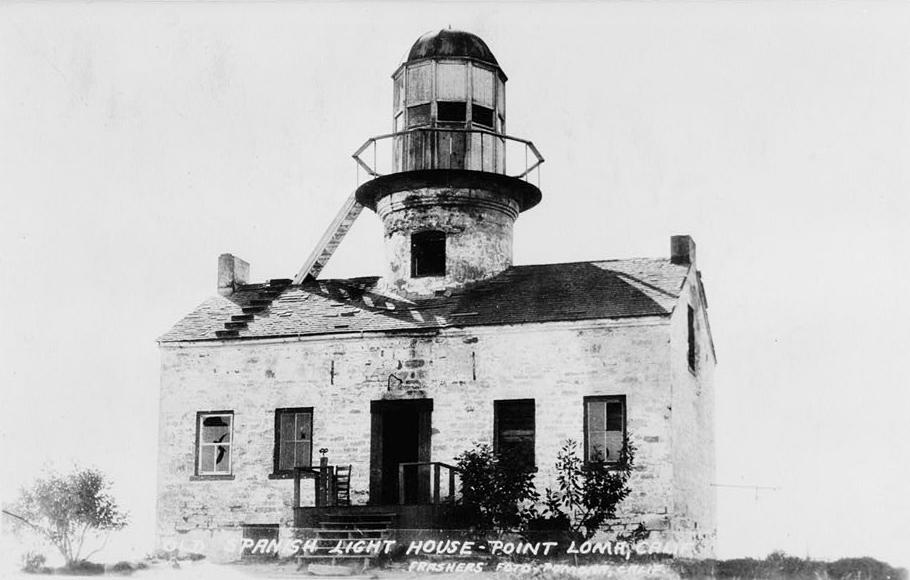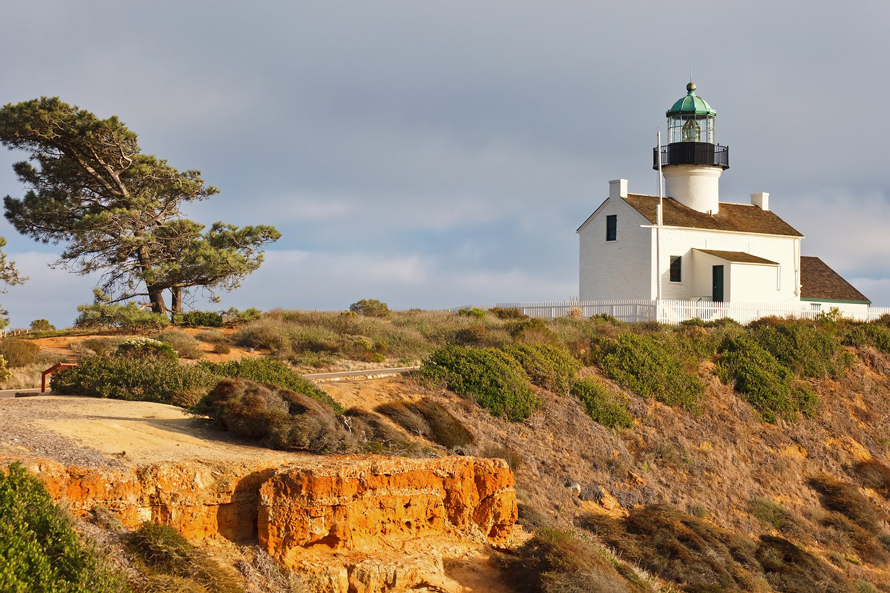 Courtesy lighthousefriends.com
 Courtesy coastandranchliving.com |
CONSTRUCTION OF THE LIGHTHOUSE began after a visit from the United States Coast Survey Party in 1851, when it was decided that the tip of Point Loma, being 422 feet above sea level, was a desirable site for a lighthouse, where the light could be seen both from the ocean and bay sides. Completed and put into service on November 15, 1855, the Cape Cod style structure featured a red tin roof, with a tower housing a new Fresnel lens at the center of the plastered brick building. It was the highest elevated lighthouse in the United States at the time of its completion.
Though the keeper turnover was rapid at the remote site, Robert Decatur Israel, a chairmaker from Pittsburgh, operated the lighthouse from 1871-1892, before moving to a new lighthouse built at a lower elevation in 1891, which he operated for the next two years. Israel, like many San Diego pioneers, married into a Californio family, and wed María Arcadia Machado de Alipas in 1852.
Life at the remote lighthouse could be a lonesome existence for the Israel family, who had three sons, Robert, Joseph, and Harry. Members of the family made frequent trips to Old Town (two hours by horse and buggy each way) for fresh water and to socialize with relatives and friends. They were back by sunset to light the lantern. The sons attended Mason Street School in Old Town, using a rowboat to get there because it was easier and quicker than by buggy.
Israel's niece, Emma Minter, resided at the lighthouse as a child and recollected that there were goats all over Point Loma, her Tia Maria keeping two or three at a time (along with chickens and pigs), and summoning them by shaking dried corn in a tin can. She described her aunt, who provided the children with milk and honey to wash down their pie, as "jolly and kind." The Israel children occupied themselves collecting shells, pebbles, sea stars, and seaweed, which were often used in home arts, decorating picture frames, boxes, etc., which can be seen throughout the lighthouse. The tidy, utilitarian parlor features an ingrain carpet; a kitchen and well-stocked pantry served the six residents well, and the two bedrooms, along with the lighthouse tower, were accessed by the narrow center circular staircase. The faux bois woodwork throughout has been painted in a medium tone oak, a common practice of the time to emulate costly or unavailable wood types.
The complex also features the reconstructed assistant's quarters and a kitchen garden, with an amazing view of the Pacific Ocean and the City of San Diego. Cabrillo National Monument below has a wonderful bookstore and museum where you can learn about the history and discoveries of Juan Rodríguez Cabrillo, the first European under the Spanish Empire to explore California in 1542.
National Park Service LINK
|


